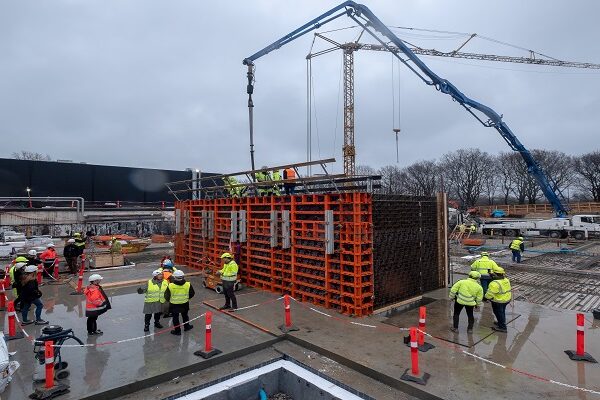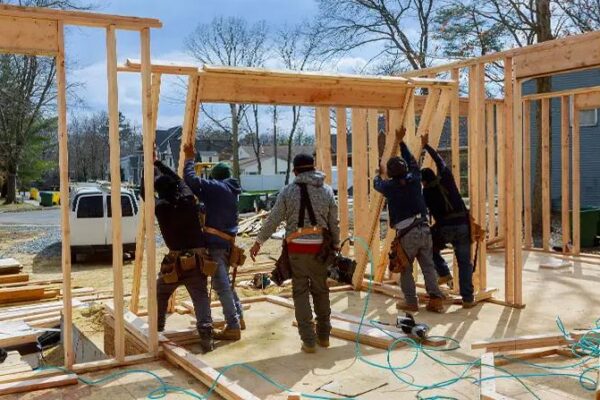In the realm of modern infrastructure development, civil engineering stands as a vanguard, shaping the physical landscapes of our cities, roads, and bridges. However, in this age of growing environmental consciousness, the role of civil engineering extends beyond mere construction—it intertwines with the imperative of environmental conservation. As we navigate a world where sustainability is paramount, the convergence of civil contractors in Chennai and environmental conservation becomes not just desirable, but essential.
Understanding The Nexus
Civil engineering and environmental conservation may seem like disparate fields at first glance, but they share a fundamental goal: to create systems that endure, without compromising the intricate balance of our ecosystems. Whether it’s designing resilient infrastructure to withstand natural disasters or implementing sustainable construction practices, civil engineers wield considerable influence over the environmental footprint of human development.
At the heart of this convergence lies the concept of sustainable development—a paradigm that seeks to meet the needs of the present without giving up the capacity of future generations to meet their own needs. This entails minimizing resource consumption, reducing pollution, and fostering resilience against climate change—all principles deeply ingrained in both civil engineering and environmental conservation.
Green Infrastructure: Building With Nature
One of the most tangible manifestations of the synergy between civil engineering and environmental conservation is the concept of green infrastructure. Unlike traditional “gray” infrastructure, which relies heavily on concrete and steel, green infrastructure leverages natural systems to fulfill various engineering functions.
Examples of green infrastructure abound: permeable pavements that allow rainwater to penetrate the ground, minimizing stormwater runoff and alleviating flooding; vegetated swales and bioswales that filter pollutants from runoff before it reaches water bodies; and green roofs that provide insulation, mitigate urban heat island effects, and support biodiversity.
By integrating nature-based solutions into the built environment, civil engineers can mitigate environmental degradation while simultaneously enhancing the resilience and functionality of infrastructure systems.
Adapting to Climate Change
Climate change poses a factual threat to both human societies and natural ecosystems, making adaptation a top priority for civil engineers and conservationists alike. Rising sea levels, more regular and intense storms, and shifting precipitation patterns necessitate innovative approaches to infrastructure design and management.
In coastal areas, for instance, engineers are exploring nature-based defenses such as mangrove restoration and oyster reef construction to protect against erosion and storm surges. Similarly, inland communities are investing in green infrastructure projects like rain gardens and constructed wetlands to manage excess rainfall and prevent flooding.
Moreover, climate-resilient design principles are becoming increasingly integrated into infrastructure standards and regulations, ensuring that new projects are equipped to withstand the challenges of a changing climate.
Renewable Energy and Sustainable Transportation
The change towards renewable energy sources and sustainable transportation systems represents another critical juncture where civil engineering intersects with environmental conservation. From the design of wind farms and solar arrays to the development of electric vehicle infrastructure, engineers play an important role in facilitating the shift towards a low-carbon economy.
By harnessing the power of renewable resources and optimizing transportation networks for efficiency, building constructors in Chennai can help reduce gas emissions and alleviate the impacts of climate change. Furthermore, investments in public transit, pedestrian-friendly infrastructure, and bike lanes not only promote environmental sustainability but also enhance quality of life and promote social equity.
Challenges And Opportunities
While the integration of civil engineering and environmental conservation holds immense promise, it is not without its challenges. Balancing economic considerations with environmental objectives, navigating regulatory frameworks, and overcoming entrenched industry practices are just a few hurdles that practitioners must contend with.
However, these challenges also give opportunities for innovation and collaboration. By fostering interdisciplinary partnerships and embracing cutting-edge technologies, civil engineers and conservationists can develop solutions that are both environmentally sound and economically viable.
Moreover, as public awareness of environmental issues continues to grow, there is increasing pressure on governments, corporations, and civil society to prioritize sustainability in all aspects of development. This cultural shift presents a fertile ground for transformative change, where the principles of environmental conservation become intrinsic to the practice of civil engineering.
In the face of mounting environmental challenges, the intersection of civil engineers and environmental conservation emerges as a beacon of hope—a path towards a more sustainable future. By embracing the principles of sustainability, harnessing the power of nature-based solutions, and prioritizing adaptation and mitigation efforts, engineers and conservationists can forge a symbiotic relationship that benefits both human societies and the natural world.
At Sathvik, the best building contractors in Chennai, we strive to build a world that is not only functional but also in harmony with the planet. Let us recognize the pivotal role that civil engineering plays in shaping our collective future. By working together across disciplines and embracing the ethos of stewardship, we can create infrastructure systems that not only stand the test of time but also nurture the ecosystems upon which all life depends.








